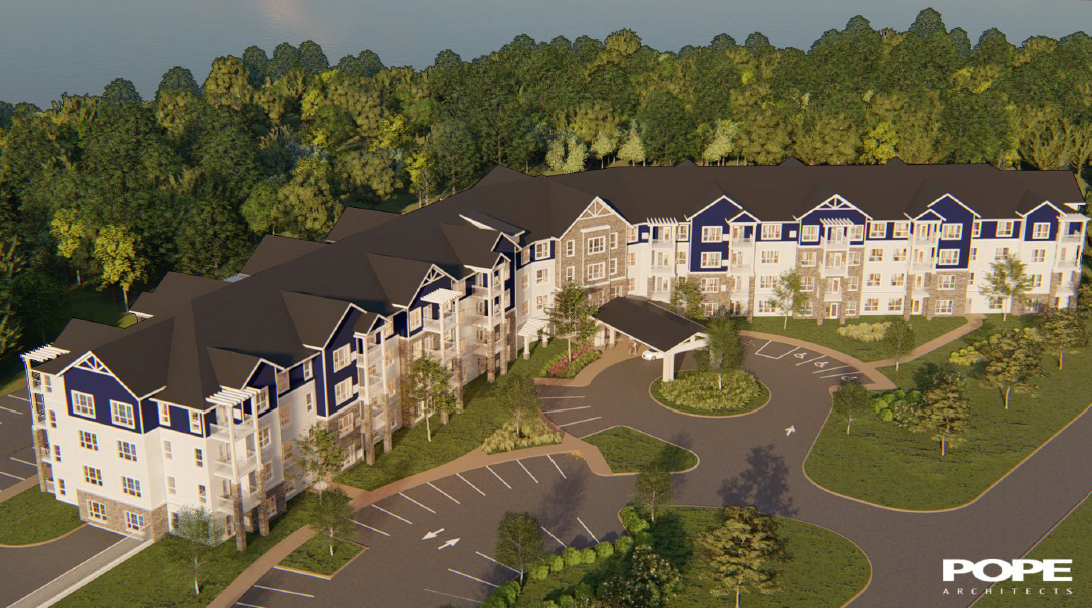Background
Older senior housing communities, in particular skilled nursing facilities, face numerous financial and operational challenges. For example, combinations of changing neighborhood demographics, shifting care option preferences, the presence of newer, modern competition and constraints on third-party reimbursement have increasingly caused nursing homes to struggle to maintain healthy occupancy ratios and cash-flow. Often, when cash-flow is tight, repairs and improvements are delayed, if done at all; senior housing property executive management and their governing boards can reasonably ask:
- Does it make sense to invest in a component of our campus that no longer may be as relevant?
- Is our mission as an organization being limited or compromised because of an inefficient physical plant that no longer serves the needs of residents and potential new residents?
- Are there repurposing options for older, inefficient buildings, and if so, how can they be financed?
These questions, important to all senior housing operators, are perhaps more acute for not-for-profit, mission-based organizations, who generally operate on tighter operating budgets. Moreover, the option of selling a building on campus to outside, third-party interests, may be counterproductive to the overall reputation of the community, as the buyer may not operate the property in a manner consistent with the original charitable mission. With so many aging senior living facilities facing financial hardship, creative measures must be taken to avoid eventual closures and bankruptcies.
One Solution: Conversion of a Portion of a Senior Housing Community to Affordable, Low-Income Senior Housing
The way forward may be the conversion of older, less-functional components of a senior housing campus, like a skilled nursing facility, to an affordable assisted living or age-restricted multifamily housing.
Such a conversion could serve the dual purposes of: (1) expanding the mission of a not-for-profit provider whose primary operation is in the market-rate sector and (2) addressing a dramatic shortage nationwide of affordable housing, especially for lower-income seniors.
Consider that the National Low-Income Housing Coalition reports that there are 7.2 million affordable housing units needed for low-income families and individuals across the country. By re-purposing healthcare or other older buildings on campus to affordable housing or assisted living, not-for-profit sponsors can avoid closures, unwanted sales to unrelated buyers, and financial hardship.
Key Element of Affordable Housing Finance: Low – Income Housing Tax Credits (LIHTCs)
One of the major challenges to the development of affordable housing is that there is typically a large gap between the costs of the project and the amount of financing that can be supported by operational cash-flow. In many affordable transactions, the gap is filled with equity generated from the procurement of Low-Income Housing Tax Credits (LIHTCs). These credits can significantly lessen the financial burden of conversion or repurposing senior living facilities into affordable assisted living or age-restricted senior housing.
LIHTCs provide developers and owners with a significant equity contribution towards the new construction, substantial rehabilitation, refinance, or acquisition of affordable housing projects. The program is administered by the Internal Revenue Service (IRS) through State Housing Finance Agencies and local Development Agencies. LIHTCs connect investors with sponsors and developers, providing the investors with considerable tax benefits over a period of approximately 10 years in exchange for their investment into the creation or preservation of affordable housing properties.
LIHTCs are generally available under two programs: 9% credits and 4% credits. The 9% credits cover more development costs but are extremely competitive to secure and often require a sponsor to commit to a higher degree of affordability with respect to rents and income limitations of residents. Moreover, the highly competitive and limited-supply 9% credit is typically reserved for new construction without any other federal subsidies.
The 4% credits, which often are accompanied by an allocation of tax-exempt multifamily housing revenue bonds, is typically allocated on a non-competitive basis. The 4% credits are considered part of the bond allocation, and given these credits are more accessible than their 9% counterpart and are available for repurposing existing buildings, the 4% execution will likely be the more likely product available.
In a typical LIHTC transaction, the credits would produce equity that covers anywhere from about 30% – 70% of the development costs associated with repurposing existing facilities into affordable housing. The LIHTC is equity, not to be repaid by the Project Owner. The typical Project ownership structure for LIHTC transactions is a Limited Partnership or Limited Liability Corporation, with the not-for-profit sponsor serving as a general partner or managing member and the tax credit investor acting as a limited partner or member. The not-for-profit sponsor can earn a development fee in a LIHTC transaction.
Debt Structures: HUD Mortgage Insurance as a Complement to 4% Credits/Tax Exempt Bond Financing
LIHTCs provide the equity for an affordable senior housing development; however, additional sources of financing will be needed to complete the capital stack.
Three HUD-insured mortgage loans can provide a source of financing for the debt component of a LIHTC transaction: Section 221(d)(4); Section 223(f); and Section 232 (assisted living). While a modest number of affordable assisted living facilities have been financed under the Section 232 program, the vast majority of HUD transactions that involve LIHTCs occur with the Section 221(d)(4) and Section 223(f) multifamily programs. (For a detailed summary of HUD’s mortgage insurance programs, please visit www.simsmortgage.com.)
The HUD 221(d)(4) program is the most likely option to accomplish the goals of a senior living sponsor to repurpose to affordable housing when the cost to renovate the property is higher than $40,000 per unit. This program is used for new construction and substantial rehabilitation and combines construction and permanent financing into one mortgage with an amortization and term of up to 40 years. Interest rates for the 221(d)(4) loans are currently in the low 3% range. The industry-best 40-year amortization lowers debt service payments, enhancing the feasibility of the Project.
Section 223(f) can be used when the cost of the renovation is less than $40,000 per unit. This program features a maximum 35-year amortization and current interest rates in the range of 2.50%. Both Section 221(d)(4) and Section 223(f) have .25% annual mortgage insurance premiums for affordable projects. These premiums are payable on the unpaid principal balance throughout the life of the loan.
A HUD-insured loan typically complements the tax-exempt bond financing that is needed “up front” to qualify for the 4% LIHTCs. That is because bond proceeds must be disbursed to pay project costs. However, the tax-exempt bonds are of limited duration, typically maturing after the rehabilitation is completed and the project is placed into service. The HUD-insured loan becomes the long-term financing after the bonds are redeemed post-rehabilitation.
LIHTC transactions often need additional sources of funding beyond the equity and tax-exempt bond/HUD debt. This funding can come from a variety of sources such as state grants or supplemental financing programs, Federal Community Development Block Grants (CDBG), HOME funds and deferred development fees.
Are LIHTCs for You?
The LIHTC process is complex and involves significant administrative and reporting activities once the project is placed into service; however, if utilized properly, tax-credits can be a uniquely beneficial tool to preserve or create affordable assisted living or age-restricted housing. This process is further complicated if the converted units are part of an existing building financed with taxable or tax-exempt debt under a Master Trust Indenture (MTI). While it’s not impossible to layer tax-credit debt into the existing capital stack, additional legal and advisory work would need to be done to determine the correct path forward.
Due to the highly complex nature of these transactions, LIHTC consultants are typically used to assist with the tax credit application and ensure IRS compliance issues are followed. Not-for-profit sponsors without LIHTC experience may partner with an experienced developer, who becomes part of the ownership structure, albeit in a limited control setting.
Sims Mortgage Funding, Inc. (SMF) would perform the upfront screening of the transaction from the LIHTC and HUD-insured loan perspectives, and would coordinate with our parent company, HJ Sims, on the identification of tax-exempt bond issuing agencies with access to 4% credits and the selection of the agency most suitable for the sponsor’s needs. Moreover, we may be able to recommend specific LIHTC developers, consultants and attorneys based on the sponsor’s geographic location. Finally, SMF would help the provider identify legal help to ensure the new debt works with the existing MTI debt on the campus.
For more information, please contact Johnny Sears at [email protected].
Sims Mortgage Funding, Inc. originates, underwrites, and funds loans for Healthcare, Multifamily and Hospital projects. We have completed over $2 billion in HUD-insured transactions and are an approved LEAN (healthcare) and MAP (multifamily) lender.



